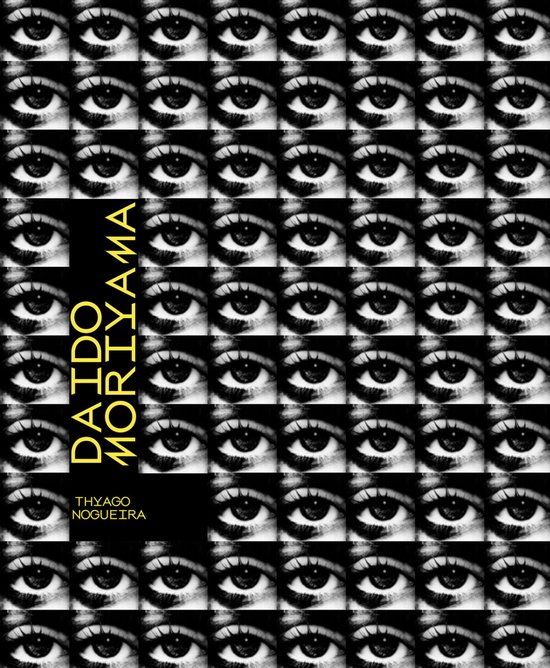
Black Sun
"The photographs as "ruins" and the "ruins" in the photographs overlap and when the newly emanated feeling for time is marked into the center of the photographs, the ruins are not the carcasses of destruction and devastation, but turn away from being coffins, symbols of death, and move the hub to the mysterious stage of life."--Shunji Ito
Black Sun is an unprecedented portrait of postwar Japan through the eyes of four of the nation's most significant photographers. It encompasses and connects ancient Japanese prophecies, the terror of nuclear destruction, and the results of swift and massive westernization.
Eikoh Hosoe, Shomei Tomatsu, Masahisa Fukase, and Daido Moriyama are widely acknowledged in Japan as masters of photography. Their work ranges from the metaphoric to the documentary, from the presentation of post-apocalyptic artifacts to portraits of crows and crowded city streets. However varied the approach, this work is unified by a sense of innovation and a persistent search for native roots.
Eikoh Hosoe's representation of the demonic myth Kamaitachi is structured like a dance, enacted among the villagers of the far north country and evoking Hosoe's childhood memories of the final years of World War II.
Shomei Tomatsu's work ranges from the legacy of Nagasaki to the student riots of the sixties. His photographs combine social documentary with a search for personal identity, a quest which concludes among the remote islanders of Okinawa.
Masahisa Fukase's epic series Crow adopts the universal symbol of the black bird as evil omen. The crow's somber presence shadows Fukase's journey to his birthplace on the northern island of Hokkaido, fusing private memories to a darker, national heritage.
Daido Moriyama uncovers the malice lurking in the alleys and backstreets of Tokyo. With his confrontational, highly graphic style, Moriyama reveals the overpowering density of life in modern Japan.
In the accompanying text, Mark Holborn creates his own picture of Japan's creative climate, one in which audacious exploration crashes against a legacy of tradition and refinement. He s20provides previously undocumented links between the photographers and other leading Japanese artists of our time, such as filmmaker Nagisa Oshima, graphic designer Tadanori Yokoo, and dancer Tatsumi Hijikata.
Ultimately, the dark lyricism of Black Sun serves as both cultural introduction and global prophecy. The shadow cast by these four photographers stretches beyond the shores of Japan and across the entire length of contemporary experience.
Black Sun is an unprecedented portrait of postwar Japan through the eyes of four of the nation's most significant photographers. It encompasses and connects ancient Japanese prophecies, the terror of nuclear destruction, and the results of swift and massive westernization.
Eikoh Hosoe, Shomei Tomatsu, Masahisa Fukase, and Daido Moriyama are widely acknowledged in Japan as masters of photography. Their work ranges from the metaphoric to the documentary, from the presentation of post-apocalyptic artifacts to portraits of crows and crowded city streets. However varied the approach, this work is unified by a sense of innovation and a persistent search for native roots.
Eikoh Hosoe's representation of the demonic myth Kamaitachi is structured like a dance, enacted among the villagers of the far north country and evoking Hosoe's childhood memories of the final years of World War II.
Shomei Tomatsu's work ranges from the legacy of Nagasaki to the student riots of the sixties. His photographs combine social documentary with a search for personal identity, a quest which concludes among the remote islanders of Okinawa.
Masahisa Fukase's epic series Crow adopts the universal symbol of the black bird as evil omen. The crow's somber presence shadows Fukase's journey to his birthplace on the northern island of Hokkaido, fusing private memories to a darker, national heritage.
Daido Moriyama uncovers the malice lurking in the alleys and backstreets of Tokyo. With his confrontational, highly graphic style, Moriyama reveals the overpowering density of life in modern Japan.
In the accompanying text, Mark Holborn creates his own picture of Japan's creative climate, one in which audacious exploration crashes against a legacy of tradition and refinement. He s20provides previously undocumented links between the photographers and other leading Japanese artists of our time, such as filmmaker Nagisa Oshima, graphic designer Tadanori Yokoo, and dancer Tatsumi Hijikata.
Ultimately, the dark lyricism of Black Sun serves as both cultural introduction and global prophecy. The shadow cast by these four photographers stretches beyond the shores of Japan and across the entire length of contemporary experience.
| Auteur | | Mark Holborn |
| Taal | | Engels |
| Type | | Hardcover |
| Categorie | | Kunst & Fotografie |





